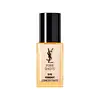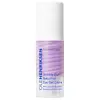What's inside
What's inside
 Key Ingredients
Key Ingredients

 Benefits
Benefits

 Concerns
Concerns

 Ingredients Side-by-side
Ingredients Side-by-side

Water
Skin ConditioningGlycerin
HumectantCaprylic/Capric Triglyceride
MaskingSqualane
EmollientCaffeine
Skin ConditioningCereus Grandiflorus Flower Extract
Skin ConditioningCoffea Arabica Seed Oil
MaskingJasminum Officinale Flower Extract
MaskingSteareth-20
CleansingCarbomer
Emulsion StabilisingGlucose
HumectantSodium Citrate
BufferingSodium Hydroxide
BufferingPalmitoyl Tetrapeptide-7
Skin ConditioningPalmitoyl Tripeptide-1
Skin ConditioningAdenosine
Skin ConditioningRibose
HumectantAmmonium Polyacryloyldimethyl Taurate
Emulsion StabilisingHydroxyacetophenone
AntioxidantCaprylyl Glycol
EmollientCitric Acid
BufferingTrisodium Ethylenediamine Disuccinate
Lactic Acid
BufferingBiotin
AntiseborrhoeicN-Hydroxysuccinimide
Skin ConditioningPolyamide-8
EmollientChrysin
Skin ConditioningTocopherol
AntioxidantPentaerythrityl Tetra-Di-T-Butyl Hydroxyhydrocinnamate
AntioxidantPotassium Sorbate
PreservativeSodium Benzoate
MaskingChlorhexidine Digluconate
AntimicrobialCI 77891
Cosmetic ColorantMica
Cosmetic ColorantWater, Glycerin, Caprylic/Capric Triglyceride, Squalane, Caffeine, Cereus Grandiflorus Flower Extract, Coffea Arabica Seed Oil, Jasminum Officinale Flower Extract, Steareth-20, Carbomer, Glucose, Sodium Citrate, Sodium Hydroxide, Palmitoyl Tetrapeptide-7, Palmitoyl Tripeptide-1, Adenosine, Ribose, Ammonium Polyacryloyldimethyl Taurate, Hydroxyacetophenone, Caprylyl Glycol, Citric Acid, Trisodium Ethylenediamine Disuccinate, Lactic Acid, Biotin, N-Hydroxysuccinimide, Polyamide-8, Chrysin, Tocopherol, Pentaerythrityl Tetra-Di-T-Butyl Hydroxyhydrocinnamate, Potassium Sorbate, Sodium Benzoate, Chlorhexidine Digluconate, CI 77891, Mica
Water
Skin ConditioningDimethicone
EmollientGlycerin
HumectantNeopentyl Glycol Diheptanoate
EmollientPentylene Glycol
Skin ConditioningDimethicone Crosspolymer
Emulsion StabilisingPropanediol
SolventBakuchiol
AntimicrobialPalmitoyl Tripeptide-1
Skin ConditioningPalmitoyl Tetrapeptide-7
Skin ConditioningHydrolyzed Rice Protein
Skin ConditioningCalanthe Discolor Extract
Skin ConditioningAloe Barbadensis Leaf Juice
Skin ConditioningChamomilla Recutita Flower Extract
MaskingGlycyrrhiza Glabra Root Extract
BleachingSantalum Album Extract
CleansingCitrus Limon Fruit Extract
MaskingSaccharum Officinarum Extract
MoisturisingGlycine Soja Protein
EmulsifyingBiotin
AntiseborrhoeicPanthenol
Skin ConditioningTocopheryl Acetate
AntioxidantAllantoin
Skin ConditioningPullulan
Superoxide Dismutase
AntioxidantChrysin
Skin ConditioningLeuconostoc/Radish Root Ferment Filtrate
AntimicrobialGluconolactone
Skin ConditioningN-Hydroxysuccinimide
Skin ConditioningCaprylhydroxamic Acid
PEG/PPG-18/18 Dimethicone
EmulsifyingTriethoxycaprylylsilane
Tetrasodium Glutamate Diacetate
Steareth-20
CleansingGlyceryl Acrylate/Acrylic Acid Copolymer
HumectantSodium Dextran Sulfate
Gel FormingXanthan Gum
EmulsifyingCarbomer
Emulsion StabilisingSodium Citrate
BufferingSodium Glycolate
BufferingCitric Acid
BufferingCalcium Gluconate
HumectantSodium Formate
BufferingSodium Hydroxide
Buffering1,2-Hexanediol
Skin ConditioningCaprylyl Glycol
EmollientPotassium Sorbate
PreservativeChlorhexidine Digluconate
AntimicrobialSodium Benzoate
MaskingPhenoxyethanol
PreservativeParfum
MaskingLimonene
PerfumingLinalool
PerfumingCitral
PerfumingCI 77007
Cosmetic ColorantCI 77891
Cosmetic ColorantWater, Dimethicone, Glycerin, Neopentyl Glycol Diheptanoate, Pentylene Glycol, Dimethicone Crosspolymer, Propanediol, Bakuchiol, Palmitoyl Tripeptide-1, Palmitoyl Tetrapeptide-7, Hydrolyzed Rice Protein, Calanthe Discolor Extract, Aloe Barbadensis Leaf Juice, Chamomilla Recutita Flower Extract, Glycyrrhiza Glabra Root Extract, Santalum Album Extract, Citrus Limon Fruit Extract, Saccharum Officinarum Extract, Glycine Soja Protein, Biotin, Panthenol, Tocopheryl Acetate, Allantoin, Pullulan, Superoxide Dismutase, Chrysin, Leuconostoc/Radish Root Ferment Filtrate, Gluconolactone, N-Hydroxysuccinimide, Caprylhydroxamic Acid, PEG/PPG-18/18 Dimethicone, Triethoxycaprylylsilane, Tetrasodium Glutamate Diacetate, Steareth-20, Glyceryl Acrylate/Acrylic Acid Copolymer, Sodium Dextran Sulfate, Xanthan Gum, Carbomer, Sodium Citrate, Sodium Glycolate, Citric Acid, Calcium Gluconate, Sodium Formate, Sodium Hydroxide, 1,2-Hexanediol, Caprylyl Glycol, Potassium Sorbate, Chlorhexidine Digluconate, Sodium Benzoate, Phenoxyethanol, Parfum, Limonene, Linalool, Citral, CI 77007, CI 77891
Ingredients Explained
These ingredients are found in both products.
Ingredients higher up in an ingredient list are typically present in a larger amount.
Biotin is a B vitamin that is naturally produced by our bodies. It is also called Vitamin H.
Our bodies use biotin in the metabolism process. It also helps our bodies use enzymes and move nutrients around. A biotin deficiency can lead to brittle hair and nails.
More research is needed on applying biotin topically. However, taking biotin orally has been shown to help nourish the skin, hair, and nails. They play a role in forming skin-hydrating fatty acids.
Biotin is water-soluble. It can be found in foods such as fish, eggs, dairy, nuts, and meat. Vitamin H stands for "haar" and "haut". These are the German words for hair and skin.
Learn more about BiotinCaprylyl Glycol is a humectant and emollient, meaning it attracts and preserves moisture.
It is a common ingredient in many products, especially those designed to hydrate skin. The primary benefits are retaining moisture, skin softening, and promoting a healthy skin barrier.
Though Caprylyl Glycol is an alcohol derived from fatty acids, it is not the kind that can dry out skin.
This ingredient is also used as a preservative to extend the life of products. It has slight antimicrobial properties.
Learn more about Caprylyl GlycolCarbomer is a polymer of acrylic acid. Its main role is to create a gel consistency.
A high amount of carbomer can cause pilling or balling up of products. Don't worry, most products contain 1% or less of carbomer.
Chlorhexidine Digluconate is a preservative.
We don't have a description for Chrysin yet.
Ci 77891 is a white pigment from Titanium dioxide. It is naturally found in minerals such as rutile and ilmenite.
It's main function is to add a white color to cosmetics. It can also be mixed with other colors to create different shades.
Ci 77891 is commonly found in sunscreens due to its ability to block UV rays.
Learn more about CI 77891Citric Acid is an alpha hydroxy acid (AHA) naturally found in citrus fruits like oranges, lemons, and limes.
Like other AHAs, citric acid can exfoliate skin by breaking down the bonds that hold dead skin cells together. This helps reveal smoother and brighter skin underneath.
However, this exfoliating effect only happens at high concentrations (20%) which can be hard to find in cosmetic products.
Due to this, citric acid is usually included in small amounts as a pH adjuster. This helps keep products slightly more acidic and compatible with skin's natural pH.
In skincare formulas, citric acid can:
While it can provide some skin benefits, research shows lactic acid and glycolic acid are generally more effective and less irritating exfoliants.
Most citric acid used in skincare today is made by fermenting sugars (usually from molasses). This synthetic version is identical to the natural citrus form but easier to stabilize and use in formulations.
Read more about some other popular AHA's here:
Learn more about Citric AcidGlycerin is already naturally found in your skin. It helps moisturize and protect your skin.
A study from 2016 found glycerin to be more effective as a humectant than AHAs and hyaluronic acid.
As a humectant, it helps the skin stay hydrated by pulling moisture to your skin. The low molecular weight of glycerin allows it to pull moisture into the deeper layers of your skin.
Hydrated skin improves your skin barrier; Your skin barrier helps protect against irritants and bacteria.
Glycerin has also been found to have antimicrobial and antiviral properties. Due to these properties, glycerin is often used in wound and burn treatments.
In cosmetics, glycerin is usually derived from plants such as soybean or palm. However, it can also be sourced from animals, such as tallow or animal fat.
This ingredient is organic, colorless, odorless, and non-toxic.
Glycerin is the name for this ingredient in American English. British English uses Glycerol/Glycerine.
Learn more about GlycerinWe don't have a description for N-Hydroxysuccinimide yet.
Palmitoyl Tetrapeptide-7 (formerly Palmitoyl Tetrapeptide-3) is a lab-made peptide with anti-inflammatory and skin-repairing benefits. It's made up of four amino acids (glycine, glutamine, proline, and arginine) and palmitic acid (which helps it penetrate skin more effectively).
This ingredient helps reduce inflammation by limiting the production of interleukin-6 (IL-6), a chemical that triggers inflammatory responses, particularly after UV exposure.
Less inflammation = slower collagen breakdown and a longer-lasting, youthful appearance.
Palmitoyl Tetrapeptide-7 also stimulates collagen production and supports a healthier skin barrier.
Over time, this can improve skin firmness, hydration, and reduce the appearance of fine lines. It’s commonly paired with Palmitoyl Tripeptide-1 in the well-known Matrixyl 3000 complex for enhanced anti-aging effects.
This ingredient has been shown to be effective and safe in cosmetic use and you'll typically find it in small amounts (less than 0.01%).
Due to its palmitic acid base, it may not be safe for Malassezia folliculitis.
Read more about other common types of peptides here:
Learn more about Palmitoyl Tetrapeptide-7Palmitoyl Tripeptide-1 is also known as pal-GHK. It is made up of 3 amino acids and palmitic acid, a fatty acid that helps it absorb into skin more easily.
This peptide is as a signal peptide, meaning it tells the skin to produce more collagen. Collagen is the key protein that helps form the skin's structure and keep it plump, firm, and hydrated.
By boosting collagen production, this ingredient supports a stronger skin barrier and helps reduce the appearance of wrinkles.
You'll most likely see this ingredient paired with Palmitoyl Tetrapeptide-7 in the well-known Matrixyl 3000 complex. While results from in-house testing should be viewed cautiously, this peptide duo is among the most studied and widely used in modern skincare.
Due to its palmitic acid base, this ingredient may not be safe for Malassezia folliculitis.
Read more about other common types of peptides here:
Learn more about Palmitoyl Tripeptide-1Potassium Sorbate is a preservative used to prevent yeast and mold in products. It is commonly found in both cosmetic and food products.
This ingredient comes from potassium salt derived from sorbic acid. Sorbic acid is a natural antibiotic and effective against fungus.
Both potassium sorbate and sorbic acid can be found in baked goods, cheeses, dried meats, dried fruit, ice cream, pickles, wine, yogurt, and more.
You'll often find this ingredient used with other preservatives.
Learn more about Potassium SorbateSodium Benzoate is a preservative. It's used in both cosmetic and food products to inhibit the growth of mold and bacteria. It is typically produced synthetically.
Both the US FDA and EU Health Committee have approved the use of sodium benzoate. In the US, levels of 0.1% (of the total product) are allowed.
Sodium benzoate works as a preservative by inhibiting the growth of bacteria inside of cells. It prevents the cell from fermenting a type of sugar using an enzyme called phosphofructokinase.
It is the salt of benzoic acid. Foods containing sodium benzoate include soda, salad dressings, condiments, fruit juices, wines, and snack foods.
Studies for using ascorbic acid and sodium benzoate in cosmetics are lacking, especially in skincare routines with multiple steps.
We always recommend speaking with a professional, such as a dermatologist, if you have any concerns.
Learn more about Sodium BenzoateSodium Citrate is the sodium salts of citric acid. In skincare, it is used to alter pH levels and acts as a preservative.
Its main functions are to maintain the pH of a product and neutralize metal ions.
The acidity of our skin is maintained by our glands and skin biome; normal pH level of skin is slightly acidic (~4.75-5.5).
Being slightly acidic allows our skin to create an "acid mantle". This acid mantle is a thin barrier that protects our skin from bacteria and contaminants.
Learn more about Sodium CitrateSodium Hydroxide is also known as lye or caustic soda. It is used to adjust the pH of products; many ingredients require a specific pH to be effective.
In small amounts, sodium hydroxide is considered safe to use. However, large amounts may cause chemical burns due to its high alkaline.
Your skin has a natural pH and acid mantle. This acid mantle helps prevent harmful bacteria from breaking through. The acid mantle also helps keep your skin hydrated.
"Alkaline" refers to a high pH level. A low pH level would be considered acidic.
Learn more about Sodium HydroxideSteareth-20 is a waxy compound used to emulsify ingredients. It is created from stearyl alcohol.
It possesses surfactant properties. This means it reduces surface tension and helps oils, dirt, and pollutants to be washed away.
The 20 stands for the number of ethylene oxide used to create this ingredient.
Learn more about Steareth-20Water. It's the most common cosmetic ingredient of all. You'll usually see it at the top of ingredient lists, meaning that it makes up the largest part of the product.
So why is it so popular? Water most often acts as a solvent - this means that it helps dissolve other ingredients into the formulation.
You'll also recognize water as that liquid we all need to stay alive. If you see this, drink a glass of water. Stay hydrated!
Learn more about Water